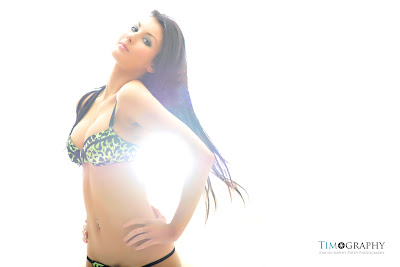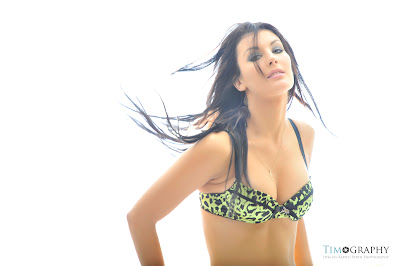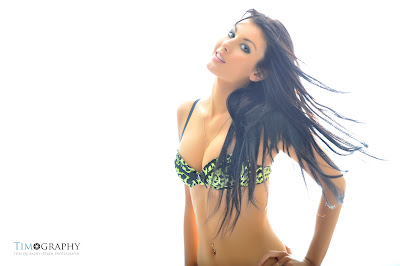 |  |
Hey there all and thanks for tuning in for another blog post. Today we have a little bit of a continuation from the last blog post, insomuch that the images accompanying this blog were taken during the same shoot with Serena.

The diagram on the right shows the lighting set-up itself. Pretty simple really. I mounted the softboxes and beauty dish to my SB-900’s by using a bunch of these great little flash brackets that you can get on eBay. They are so much sturdier than some of the other rubbish out there and they really do take a beating and are capable of supporting quite a bit of weight.
 |  |
I don’t quite remember the exact light ratios – sorry – but I can tell you that the key light (the beauty dish) was metering on Serena’s face at f/4 and I’m pretty sure that the softboxes were about 2/3rd’s of a stop below that; which makes them register the light meter at f/3.2. Shooting at this aperture allowed me to capture some of that gorgeous depth-of-field that you can see. Yummy. Well, I like it at least…
 |  |
The image on the left above was actually a test shot, wherein I turned the beauty dish light off all-together “just to see what it looked like”. I have to say that I don’t mind it but all in all I thought there was just a little too much contrast for my liking, for what I had envisaged in my head to what was appearing on the back of my Nikon D3s. Not to worry, a flick of a switch on the PocketWizard AC3 zone controller sitting atop the camera and the beauty dish was turned back on again. That sure as heck beats getting up and down and having to fiddle around on the back of the flash itself to adjust stuff. Enough said.
Although speaking of not saying quite enough, I should point out that all the lights, even though they were TTL capable SB-900’s being triggered by TTL capable PocketWizard radio’s; everything was set to manual. Again, although I didn’t write it down; but from memory I think the beauty dish was at about 1/8th power, making the softboxes dialled into 1/8th minus 2/3 of a stop. This translated into almost instantaneous power recycling and allows 8 shots in one quick burst without having to stop and let the flashes recharge. Cool.
Getting back to the lighting diagram just for a moment, you may also notice that all the lights were gridded. I really love the control this gives for reducing the amount of light that spills all over the place. The beauty dish also had a “sock” on it in addition to the grid to soften the light just a little bit more. So the white backdrop roll that I was using turned that nice pleasant neutral grey.
Well that’s about all I can think to write for now. It’s been a really long week and a flat-out weekend so I’m going to call it a night. Thanks for reading, keep shooting what you love and I’ll talk to you soon.











